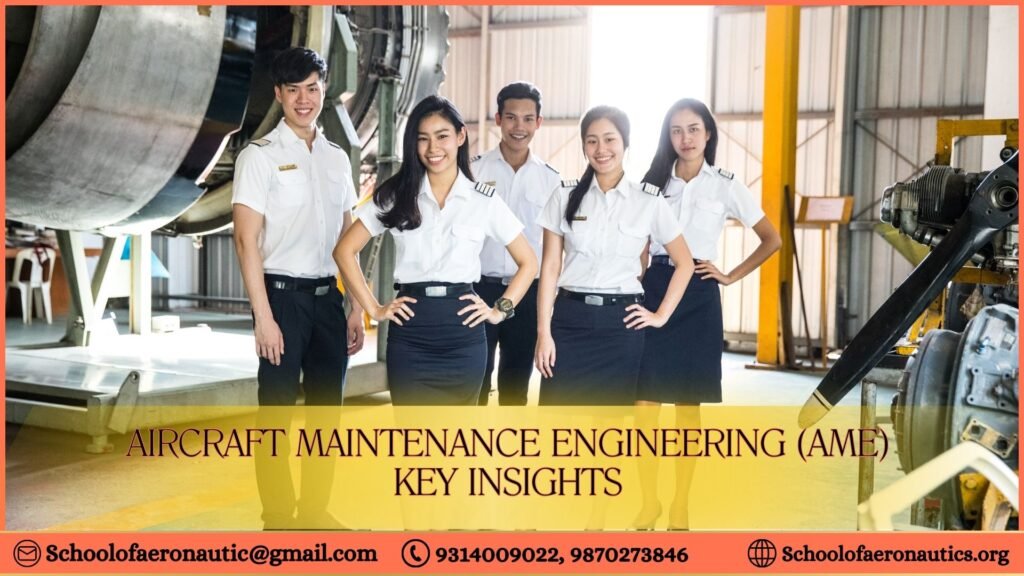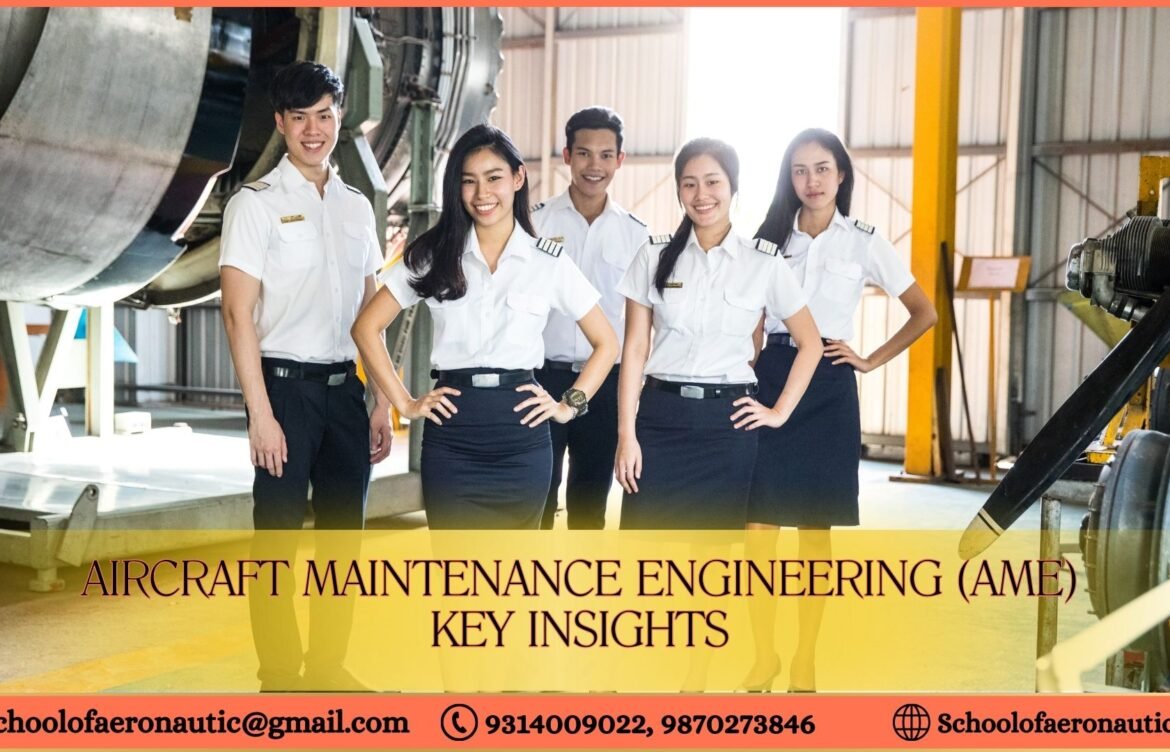Everything You Need to Know About Aircraft Maintenance Engineering (AME)

Aircraft maintenance Engineering( AME) is a technical field within the aeronautics industry that focuses on icing the airworthiness and safety of aircraft. It’s a critical sphere taking specialized moxie, perfection, and a commitment to safety. As aeronautics technology evolves, AME professionals become more necessary in maintaining the trustability of airplanes and copters, precluding malfunctions, and icing compliance with transnational safety norms.
What’s Aircraft Maintenance Engineering?
Aircraft maintenance Engineering isn’t a conventional degree but a licensed program designed to train individuals in maintaining, examining, and repairing aircraft. AME professionals are responsible for certifying aircraft as flight-ready after performing rigorous checks and maintenance.. They work under non-supervisory authorities like the Federal Aviation Administration( FAA) or the Directorate General of Civil Aviation( DGCA) in India.
An AME must deeply understand aircraft systems, including machines, avionics, hydraulics, and structural integrity. Their work directly impacts passenger safety and functional effectiveness.
Compass of Aircraft Maintenance Engineering
The aeronautics sector is expanding fleetly, creating a high demand for professed Aircraft maintenance engineers worldwide. According to assiduity protrusions, global air business will double over the coming two decades, challenging further aircraft and, accordingly, further maintenance professionals.
The compass of AME extends beyond airlines; professionals can work in
Aircraft manufacturing companies – Assisting in the product and testing of new aircraft.
maintenance, form, and Overhaul( MRO) associations – Technical centers for aircraft servicing.
Government aeronautics bodies – Regulatory places involving safety examinations and policy enforcement.
Private airlines – Managing line maintenance and icing functional readiness.
crucial liabilities of Aircraft maintenance engineers.
Routine examinations and conducting diurnal checks to ensure all factors serve rightly.
Performing in-depth maintenance grounded on manufacturer and nonsupervisory timelines.
Troubleshooting Diagnosing and repairing mechanical and electronic issues.
instruments Approving aircraft for flight post-maintenance through detailed attestation.
Adherence to Regulations icing compliance with aeronautics safety norms and protocols.
skills needed for Aircraft Maintenance Engineering.
Specialized Proficiency Mastery over aircraft systems, including aerodynamics, avionics, and accouterments wisdom.
Problem-working capacities Quick and effective results in complex mechanical issues.
Attention to Detail and Precision in maintenance tasks to avoid crimes.
Regulatory Knowledge Familiarity with aeronautics safety laws and guidelines.
Physical Stamina The capability to handle demanding tasks, frequently under time constraints.
How to Come into Aircraft Maintenance engineering.
Educational requirements
Completion of 10+ 2 with Physics, Chemistry, and Mathematics( PCM).
Registration in a DGCA- approved AME course or original programs in other countries.
Training
The AME program generally spans 2 – 4 times, combining theoretical knowledge with practical training.An internship at an aeronautics association is obligatory for hands- on experience.
Licensing
Passing licensing examinations conducted by aeronautics authorities like DGCA or EASA( European Union Aviation Safety Agency).
Specializations can include mechanical, avionics, or compound aircraft maintenance.
Career openings in Aircraft maintenance Engineering.
Aircraft maintenance Engineering offers economic and different career paths.
Career Opportunities in Aircraft Maintenance Engineering
Aircraft Maintenance Engineering offers lucrative and diverse career paths:
- Line Maintenance: On-the-spot inspections and repairs between flights.
- Base Maintenance: Extensive maintenance performed during aircraft downtime.
- Component Maintenance: Repairing specific parts like engines or landing gear.
- Quality Assurance: Ensuring maintenance standards are upheld.
AME professionals can rise to senior positions such as Chief Engineer or even transition into aviation management roles.
Challenges in Aircraft maintenance Engineering
The field is largely satisfying but comes with its set of challenges violent Work Pressure Meeting tight schedules without compromising on safety.strict Regulations clinging to evolving aeronautics laws and norms.Technological Advancements Keeping up with inventions like AI and robotization in aircraft systems.Physical and Mental Strain managing with the demanding nature of the job.
The Future of Aircraft Maintenance Engineering
The future of AME is promising, driven by technological advancements and adding reliance on sustainable aeronautics results. Arising trends include.
Digital Maintenance
Using AI for prophetic maintenance to reduce time-out.
Sustainable Aviation Working on eco-friendly aircraft systems.
Global Collaboration homogenizing maintenance practices across borders.
Conclusion
Aircraft maintenance Engineering is a foundation of the aeronautics assiduity, combining specialized moxie with a commitment to safety. It’s an investigative career for individuals passionate about aeronautics and engineering. With a growing aeronautics request and technological advancements, the demand for professed AME professionals will continue to soar, making it a largely satisfying profession for times to come.
This composition focuses on Aircraft maintenance Engineering, offering a comprehensive overview for those aspiring to enter this dynamic field. It highlights the significance, compass, skills, and unborn prospects, icing a well-rounded understanding for compendiums interested in this sphere.

